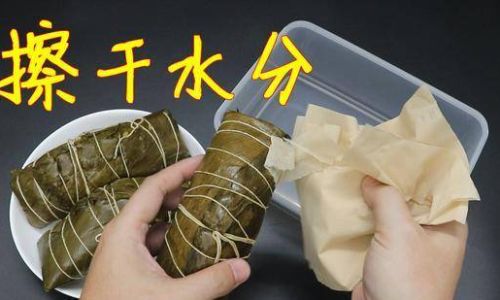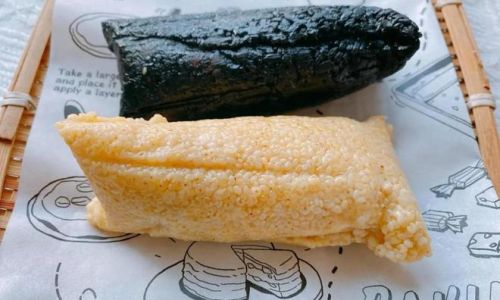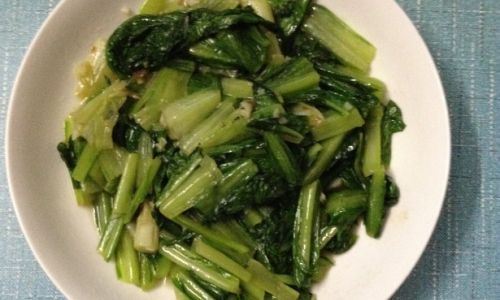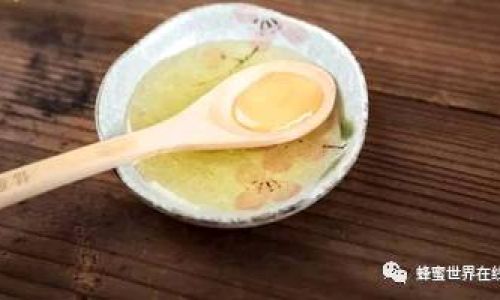Zongzi, a traditional Chinese rice dumpling wrapped in bamboo or reed leaves, has captured the hearts and palates of food enthusiasts worldwide. These triangular or tetrahedral treats, often filled with ingredients like glutinous rice, pork, beans, or dates, are a staple during festivals like Dragon Boat Festival. However, for those outside Asia or without access to freshly made zongzi, frozen varieties offer a convenient alternative. The challenge lies in reheating them properly to retain their texture, flavor, and cultural essence. This comprehensive guide explores seven effective methods for heating frozen zongzi, ensuring every bite is as delightful as the freshly prepared original.
Understanding Frozen Zongzi: Composition and Challenges
Before diving into heating techniques, it’s essential to grasp why frozen zongzi requires special care. These dumplings are dense, starchy, and encased in layers of leaves, which act as both a flavor enhancer and a protective barrier. Freezing solidifies the rice and fillings, making uniform heating critical to avoid cold spots or overcooked edges. Additionally, the leaves must remain pliable enough to unwrap without tearing, preserving the dish’s aesthetic appeal.

Method 1: Steaming – The Classic Approach
Steaming is the most traditional and recommended method for reheating zongzi, as it mirrors the original cooking process.
Step-by-Step Guide:
- Thawing (Optional but Recommended): While not mandatory, thawing frozen zongzi in the refrigerator for 8–12 hours ensures even heating. If short on time, proceed directly to steaming.
- Prepare the Steamer: Fill a wok or pot with 2–3 inches of water. Place a steamer basket or rack above the water, ensuring it doesn’t touch the liquid.
- Arrange the Zongzi: Place frozen or thawed zongzi in the steamer, leaving 1–2 inches between them for steam circulation.
- Steam: Cover and bring the water to a boil over high heat. Reduce to medium and steam for:
- Small zongzi (100g): 15–20 minutes (frozen), 10–12 minutes (thawed).
- Large zongzi (200g+): 25–30 minutes (frozen), 18–20 minutes (thawed).
- Rest: Remove and let sit for 2–3 minutes before unwrapping to prevent burns.
Pro Tips:
- Add a teaspoon of vinegar to the steaming water to keep the leaves vibrant green.
- For extra moisture, wrap zongzi in damp parchment paper before steaming.
Method 2: Boiling – A Quick Alternative
Boiling is faster than steaming but requires caution to prevent sogginess.
Step-by-Step Guide:
- Thawing: Skip thawing for this method.
- Prepare the Pot: Fill a large pot with enough water to submerge the zongzi completely. Add a pinch of salt to prevent the leaves from splitting.
- Boil: Bring water to a rolling boil, then gently add zongzi using tongs. Reduce heat to medium-low to maintain a gentle simmer.
- Cooking Time:
- Small zongzi: 12–15 minutes.
- Large zongzi: 20–25 minutes.
- Drain and Rest: Remove with a slotted spoon and let drain for 1 minute before serving.
Avoid These Mistakes:
- Overcrowding the pot, which lowers water temperature and prolongs cooking.
- Using high heat, which can rupture the leaves.
Method 3: Microwave Heating – Speed Meets Convenience
The microwave is ideal for time-strapped individuals but demands precision to avoid dryness.
Step-by-Step Guide:
- Thawing: Not required, but thawed zongzi heat more evenly.
- Wrap: Moisten a paper towel and wrap it around each zongzi. Place in a microwave-safe dish.
- Power Settings: Use 50% power to prevent uneven heating.
- Cooking Time:
- 1 zongzi: 2–3 minutes (frozen), 1.5–2 minutes (thawed).
- 2+ zongzi: Add 1–2 minutes per additional dumpling.
- Rest: Let stand for 1 minute before unwrapping.
Hacks for Better Results:
- Poke a small hole in the leaf to release steam.
- Rotate zongzi halfway through cooking for even heating.
Method 4: Oven Baking – For Crispy Exteriors
Oven baking delivers a delightful contrast between crispy leaves and soft interiors.
Step-by-Step Guide:

- Thawing: Thaw zongzi in the refrigerator overnight.
- Preheat: Set the oven to 375°F (190°C).
- Prepare: Wrap each zongzi in aluminum foil, leaving the top slightly open.
- Bake: Place on a baking sheet and cook for:
- Small zongzi: 20–25 minutes.
- Large zongzi: 30–35 minutes.
- Finish: Unwrap the foil during the last 5 minutes for a crispier texture.
Expert Advice:
- Brush the leaves with oil before baking to enhance crispiness.
- Use a meat thermometer to ensure the center reaches 165°F (74°C).
Method 5: Air Fryer – The Modern Twist
Air fryers replicate deep-frying without excess oil, ideal for texture enthusiasts.
Step-by-Step Guide:
- Thawing: Thaw zongzi slightly (30 minutes at room temperature).
- Preheat: Set the air fryer to 360°F (182°C).
- Wrap: Lightly oil the zongzi and wrap in parchment paper.
- Cook: Air fry for 10–12 minutes, flipping halfway.
- Rest: Let cool for 2 minutes before serving.
Caution:
- Overcrowding the basket may cause uneven cooking.
- Adjust time for larger zongzi.
Method 6: Sous Vide – Precision Reheating
Sous vide ensures foolproof results but requires specialized equipment.
Step-by-Step Guide:
- Thawing: Thaw zongzi completely.
- Vacuum Seal: Place in a vacuum-sealed bag with 1 tbsp of water.
- Cook: Set the sous vide circulator to 176°F (80°C) and cook for 45 minutes.
- Finish: Remove and pat dry before serving.
Why It Works:
- Gentle heating preserves moisture and texture.
- Perfect for meal prepping large batches.
Method 7: Pan-Frying – For a Golden Crust
Pan-frying adds a crunchy layer to reheated zongzi.
Step-by-Step Guide:
- Thaw and Steam: Thaw zongzi, then steam for 10 minutes to soften.
- Slice: Cut into 1-inch thick rounds.
- Fry: Heat 2 tbsp of oil in a non-stick pan. Fry slices for 2–3 minutes per side until golden.
- Drain: Place on paper towels to absorb excess oil.
Serving Suggestion:
- Pair with soy sauce or chili oil for dipping.
Critical Considerations for All Methods
-
Safety First:

- Always thaw zongzi in the refrigerator, not at room temperature, to prevent bacterial growth.
- Use oven mitts when handling hot containers.
-
Leaf Integrity:
Avoid piercing the leaves during preparation to prevent fillings from spilling out.
-
Storage:
Uncooked frozen zongzi lasts 6–12 months; cooked varieties stay fresh for 3–4 months.
-
Testing Doneness:
Insert a skewer into the center—if it feels warm throughout, it’s ready.
Troubleshooting Common Issues
- Soggy Leaves: Reduce boiling time or switch to steaming.
- Dry Rice: Add a splash of water or broth before reheating.
- Uneven Heating: Rotate zongzi halfway through cooking in microwaves or ovens.
Cultural Insights: The Art of Zongzi Appreciation
Zongzi is more than food—it’s a cultural symbol. The act of unwrapping the leaves, savoring the blend of textures, and sharing with loved ones mirrors the communal spirit of festivals. By mastering reheating techniques, you honor this tradition while adapting it to modern kitchens.
Conclusion
Reheating frozen zongzi is a balance of science and art. Whether you prefer the time-tested steam, the speed of the microwave, or the crispiness of air frying, each method offers a unique pathway to perfection. Experiment to find your favorite, and remember: patience and attention to detail are the secret ingredients to reviving the magic of zongzi, frozen or fresh.
Final Tip: Pair reheated zongzi with a cup of jasmine tea or chrysanthemum infusion to cleanse the palate and elevate the dining experience. Bon appétit!





0 comments